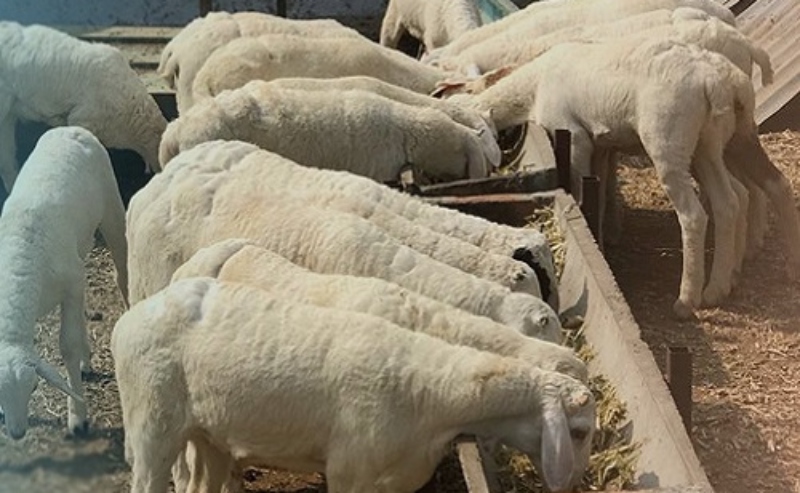Today’s article revolves around a Nachi breed of goats that is native to Pakistan and renowned worldwide. The Nachi breed is among the oldest goat breeds in the province of Punjab, Pakistan. The passion and efforts of enthusiasts in Punjab have led to the preservation of this ancient breed in its pure form.
Today, we interview a prominent farmer who has diligently maintained the pure lineage of Nachi Breed on his farm. We will inquire about how long he has been raising Nachi Breed in Pakistan, the pedigrees of his goats, the distinctive characteristics and points observed in this breed, the average weight of their goats, and the unique way these goats move. In short, we will ask every important question about the Nachi goat breed.
Join us in exploring the details with Mr Malik Muhammad Asif Awan, a notable breeder and owner of Nachi Breed goats farm in Bahawalpur, Pakistan.
Question: How long have you been raising Nachi goats in Pakistan?
This passion has been passed down from our ancestors. Nachi Breed stands out as a rare breed of goats globally. Our elders cherished this breed, and we have a special fondness for it too. Nachi goats are exclusively found in Pakistan worldwide. We maintain this ancient lineage with a generational passion. Understand that our blood carries a deep love for Nachi Breed. To give you an estimate, I have been caring for Nachi goats for almost the past 50 years.
Question: What is this breed called in the local language, and what are its characteristics?
In the regional language, this breed is known as ‘Ravichunr.’ However, the name widely recognized across Pakistan is Nachi goats. The name Nachi is derived from the way these goats move, resembling a dance. Their distinctive walking style gives them the name Nachi, reflecting their unique charm.
Question: What is the weight of these goats, and how many offspring do they usually have?
Under normal circumstances, these goats give birth to two kids, sometimes three or four, and occasionally just one. However, chances are that Nachi Breed goats typically give birth to two kids at a time. As for weight, I recently sold a buck that participated in a livestock festival in Faisalabad. Its weight was 140 kilograms. Generally, the weight depends on your efforts. Providing good nutrition and ensuring regular deworming for bucks can significantly contribute to the breed’s overall weight gain.
Question: How much cooperation has the Punjab government provided in the conservation and promotion of this breed?
Before 2011, there was no recognition at the government level. However, in 2011, there was a livestock festival at the Agriculture University Faisalabad, where investors and researchers from around the world were present. Nachi Breed garnered significant international interest, and a semen sample was taken for further research. Since then, the breed has gained recognition, and the Punjab government has actively registered these farms. They collaborate extensively on matters of medicine and vaccination for these goats.
Question: There’s a unique way they walk, and it is also said that there is a genetic fault in their legs causing this distinctive gait. Is this true?
No, there is no such thing. Instead, the way they walk is a natural characteristic of this breed. It is precisely this unique quality that endears people to them. If there were any fault, given our long association with this breed over several decades, we would have noticed it. In the group dynamics and growth, we haven’t observed any such issue in the past 50 years.
Question: How can one estimate if a goat is pure Nachi Breed?
Before considering the purchase of a pure Nachi Breed goat, one should be aware of certain points that help determine its purity. Since there’s a crossbreed named Multani Shujabadi that resembles very much to Nachi goat breed it’s important to be cautious. Pure Nachi goats should have the following physical characteristics:
- Nose: First and foremost, observe its nose; it should resemble a parrot’s beak. This feature is also known as the Roman nose.
- Horns: Next, examine the horns; they should be of moderate size, not too big or too small.
- Neck: The neck of a Nachi Breed is long and slender, creating a unique style when it walks, similar to a snake’s movement.
- Chest: The chest of a pure Nachi goat is broad.
- Gait: When it walks, it should move its feet in a playful and dancing manner, making it appear lively.
- Ears: Check its ears; they are long but smaller compared to the Beetal Goat Breed.
- Stature: Nachi goats always have a tall stature.
Question: As a prominent breeder, could you share whether the interest in Nachi goats in Pakistan increases or decreases over time?
If we go back a few years, these goats were primarily kept as domestic goats in rural areas. People in villages, especially those with limited resources, would raise them. However, due to increased awareness and government initiatives, there has been a growing interest in this breed among the public. Now, people keep these goats at the farm level for economic purposes. In the last three to four years, there has been a significant demand for these goats in international markets, and enthusiasts from other countries are showing keen interest in them.
Question: What message would you like to convey to the people of Pakistan interested in keeping Nachi Breed goats?
Certainly, if anyone has a passion for keeping this breed, they should pursue it and acquire pure Nachi goats. I guarantee that if you care for these goats with genuine interest, over time, you will realize the business potential within this breed. Our family has been associated with this lineage for the past 50 years, and perhaps there is no other breed in Pakistan that matches the excellence of these goats.



